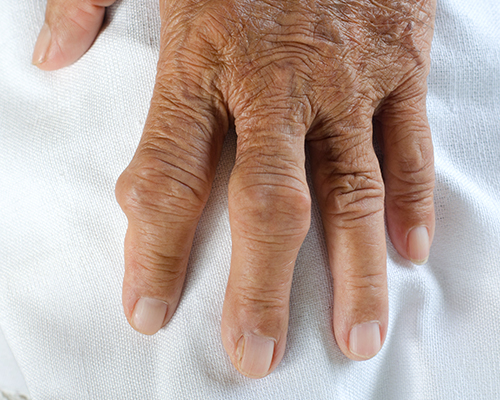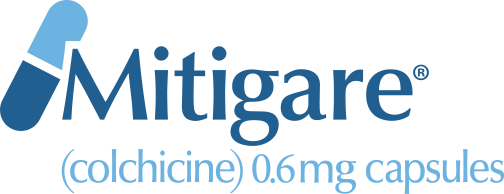
If you’ve ever had a gout flare, you know one thing for sure—you never want it to happen again. Flares can occur suddenly, often in the middle of the night.1 You might wake up to find that your big toe is red, hot, swollen and excruciatingly painful.1 Recognizing the symptoms early on and understanding the four stages of gout may help you to avoid this unpleasant scenario.2
Patient perceptions
A survey conducted by the Gout and Uric Acid Education Society (GUAES) showed that nine out of 10 people with gout agree that it is a serious health issue.3 But the same survey revealed that more than half of people who suffer with the disease said that treating their gout was not a priority.3
Expert opinion
“Gout is an extremely destructive disease that needs to be addressed year-round—not just during flares” says N. Lawrence Edwards, MD, a rheumatologist and GUAES chairman.3 “Unfortunately, while those with gout know just how painful and debilitating a flare can be, there is low awareness of the long-term health implications for gout, including the link to other comorbid health issues.”3
If you suspect you have gout, it is important to learn as much as you can about the disease and to adopt a flare prevention strategy early in your treatment. Understanding the four stages of gout is a good place to start.
Four stages of gout
Gout often begins silently, with the uric acid level slowly building in the bloodstream.2 As time goes by, it can progress through four stages: asymptomatic hyperuricemia, acute gout, intercritical gout (in which there are symptom-free intervals between acute gout attacks) and eventually chronic tophaceous gout.2 The four stages of gout are described below:
Asymptomatic hyperuricemia
Although no gout symptoms are present, the uric acid level in the bloodstream is higher than normal.4 Medication is not usually necessary, but the doctor may recommend diet and/or lifestyle changes to decrease the risk of flare.2,4
Acute gout
At this point, uric acid crystals that have been accumulating in the joint can suddenly cause intense pain and swelling and limit the range of motion.4
Intercritical gout
Although no symptoms may be present between gout flares, uric acid crystals continue to accumulate in the joints.4 Flares may become more painful and begin to happen more frequently than before.4
Chronic tophaceous gout
At this stage, uric acid crystals harden into tophi—chalky whitish lumps that form under the skin.2 The disease has progressed to a form of chronic arthritis, where bone and cartilage become deformed and are eventually destroyed.4 Due to the ongoing, inflammatory nature of the disease, kidney damage is also possible.4
Effects on the body
Left untreated, gout can result in permanent bone, joint and tissue damage.3 Gout and uric acid levels that are higher than normal also have been linked to other health issues—kidney stones and chronic kidney disease, diabetes, heart attack and stroke, to name a few that patients should talk to their doctors about.3
Impact on quality of life
The impact of untreated gout is not just physical—it can affect quality of life as well.5,6 Emotional health, social life, sleep and sexual function are just a few aspects of life that can be negatively affected by gout, which is why a prevention strategy is so important.6
Taking the first step
If you suspect you have gout, see your doctor as soon as possible, especially if you are in the midst of a flare. You may want to download and complete the Gout Flare Questionnaire (from Resources for Patients) before your appointment. After your initial examination, your doctor may refer you to a rheumatologist (a specialist who focuses on patients with arthritis and other inflammatory joint conditions).
Whatever you do, don’t wait—the sooner you talk to your doctor, the sooner you will be able to take steps to identify if a preventative treatment strategy is appropriate for you to reduce your risk of gout and gout flares.
Gout Friendly Diet Cheat Sheet
Discover the benefits of a gout-friendly diet that may reduce your risk of future flares.
INFOGRAPHIC
NOTE:
This article was not written by a medical professional and is not intended to substitute for the guidance of a physician. These are not West-Ward’s recommendations for gout flare prevention, but rather facts and data collected from various reliable medical sources. For a full list of resources and their attributing links, see below.

